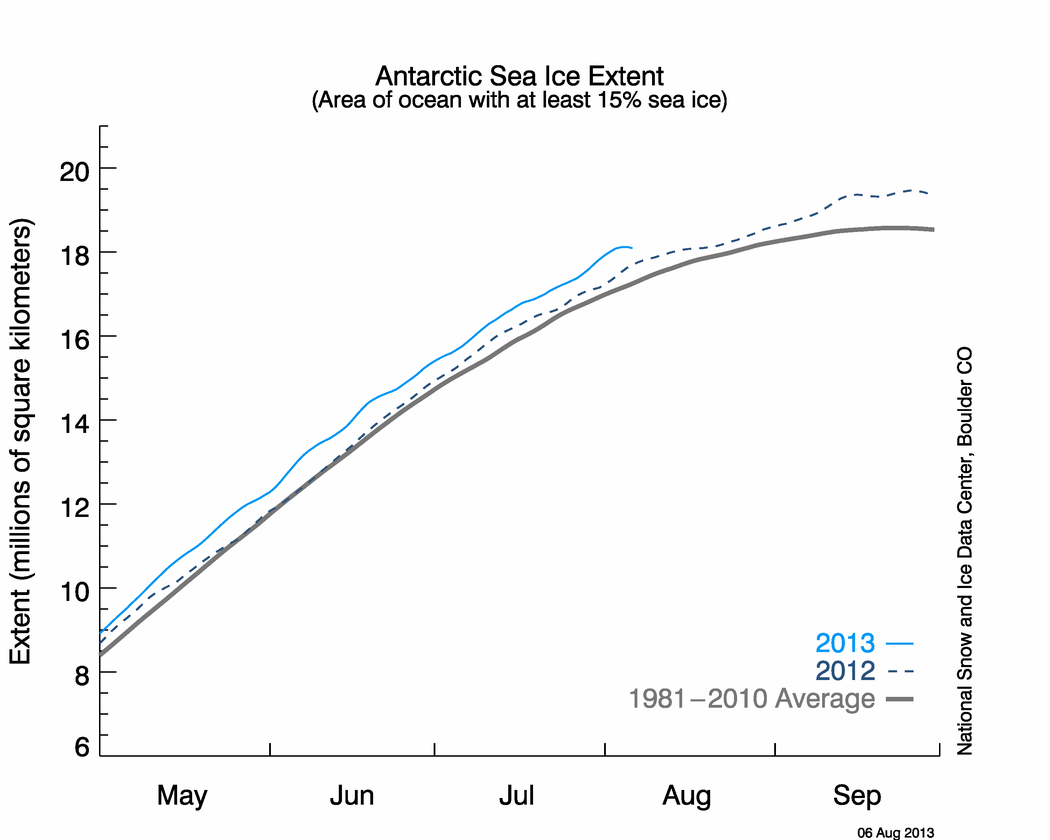If the IPCC has made the prediction that the antarctic ice sheet should grow then show us their report and highlight the relevant text.
Ice sheets and sea ice are entirely different thing. We're talking about sea ice, you're talking about ice sheets.
This is the one of the granddaddies of modeling, Manabe 1991. Check p. 795. The model predictions from that paper are exactly what's been observed.
Manabe et al, 1991
---
It is surprising, however, that the sea-ice thickness in the G integration increases significantly in the immediate vicinity of the Antarctic Continent despite the increase in atmospheric carbon dioxide. This is consistent with the slight reduction of sea surface temperature (figure 10a). It will be shown in section 9a that, owing to the intensification of the near-surface halocline caused by the increased supply of water at the oceanic surface, the convective mixing of cold near-surface water with warmer underlying water becomes less frequent, resulting in the increase of sea ice and slight reduction of sea surface temperature.
---
So, damn good model, and that was back in 1991.






